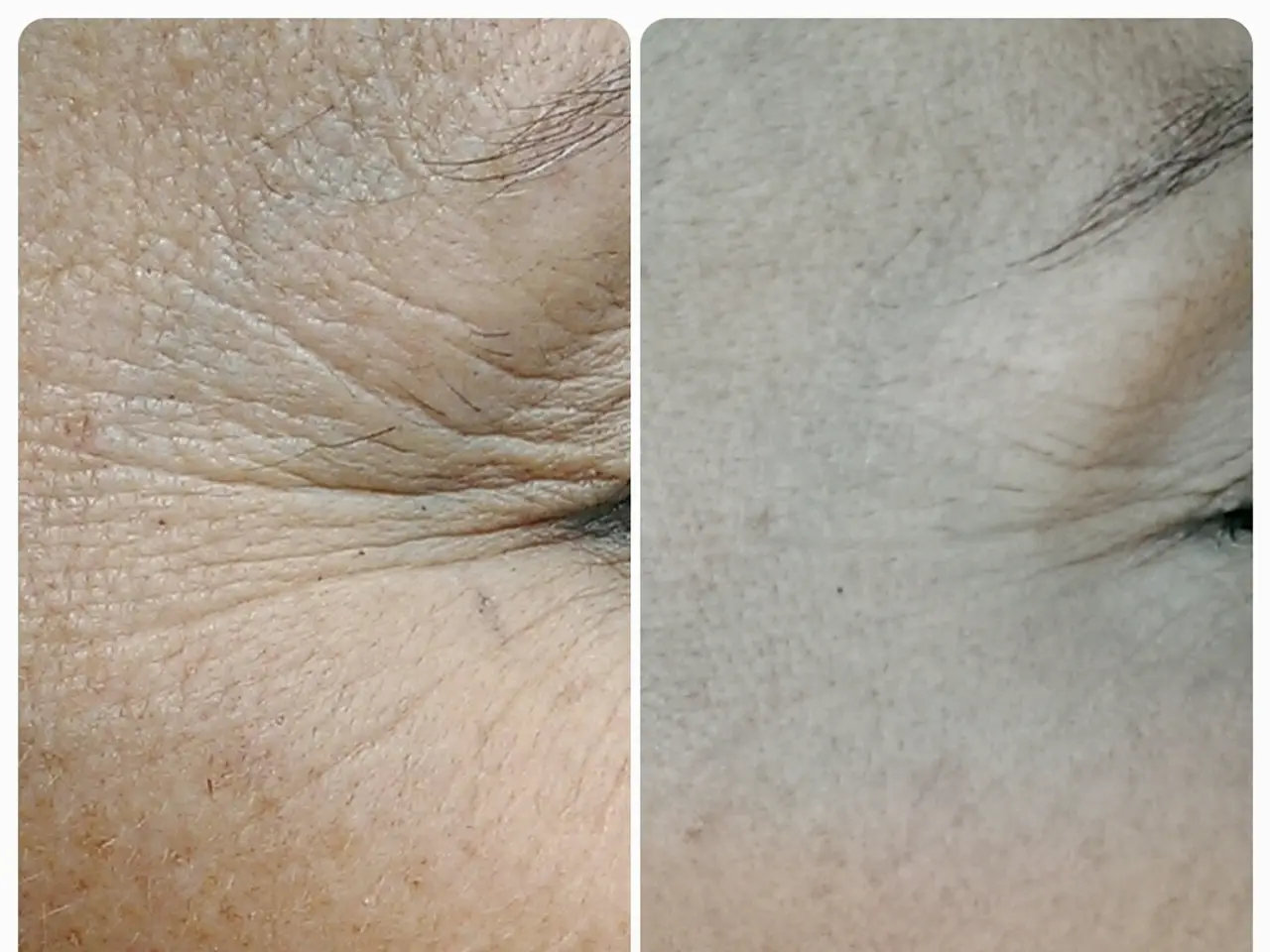Detecting Skin Cancer: Recommendations, Self-Checks, and Further Information
Skin cancer is the most common cancer diagnosis in the United States, with approximately 9,500 people receiving a diagnosis every day. This alarming statistic underscores the importance of regular skin cancer screenings for early detection and treatment.
The American Cancer Society (ACS) recommends performing a skin self-exam once a month to check for new or changing moles or spots. The American Academy of Dermatology (AAD) and the Skin Cancer Foundation also support regular monthly self-screenings, especially for individuals at higher risk of skin cancer.
For high-risk individuals, the AAD and ACS highlight increased vigilance through monthly self-exams to notice new or changing lesions early and annual or more frequent professional full-body skin exams by a dermatologist, tailored according to personal risk factors. These factors may include a history of indoor tanning, frequent sunburns, extensive sun exposure without protection, fair skin, numerous or atypical moles, personal or family history of skin cancer, and immunosuppressed individuals.
During a self-exam, one should note changes in the color, size, shape, or texture of an existing bump, as well as moles or bumps that bleed or are painful to the touch. Sores that do not heal after 2 weeks and scaly, thickened, or crusty patches of skin are also signs to watch out for. Bumps with irregular shapes and undefined edges, as well as those with uneven color, are potential signs of skin cancer.
A full-length mirror and hand mirror may help a person better visualize certain parts of their body during a self-screening. The self-exam technique recommended includes a systematic, head-to-toe check in a well-lit area.
While more research may help determine whether targeted screening exercises can reduce the mortality rate in people at high risk of skin cancer, it's essential to prioritize monthly self-screening for all adults. Skin cancers such as melanoma are visible to the naked eye, and most early stage skin cancers have a high cure rate.
The Skin Cancer Foundation advises getting a full-body professional skin exam annually, with the frequency potentially increased based on individual risk factors. However, the United States Preventive Services Task Force (USPSTF) has not issued a specific recommendation for routine skin cancer screening in asymptomatic adults due to insufficient evidence, but emphasizes clinical judgment especially for high-risk patients.
In summary, the ACS, AAD, and Skin Cancer Foundation all advocate for regular skin cancer self-screenings and professional examinations for early detection and treatment. High-risk individuals should maintain increased vigilance through monthly self-exams and more frequent professional exams based on their personal risk factors. Self-screening can help with early detection of skin cancer, potentially leading to a higher cure rate.
- Regular self-exams and professional screenings are crucial for people at risk of other skin cancers, such as melanoma, as they can lead to early detection and a higher cure rate.
- The American Cancer Society, the American Academy of Dermatology, and the Skin Cancer Foundation all stress the importance of regular monthly self-exams for individuals with higher risks of skin cancer to notice new or changing lesions early.
- Science and medical advancements continue to explore targeted screening exercises to reduce skin cancer mortality rates, particularly for high-risk individuals, contributing to the health and wellness of people nationwide.





